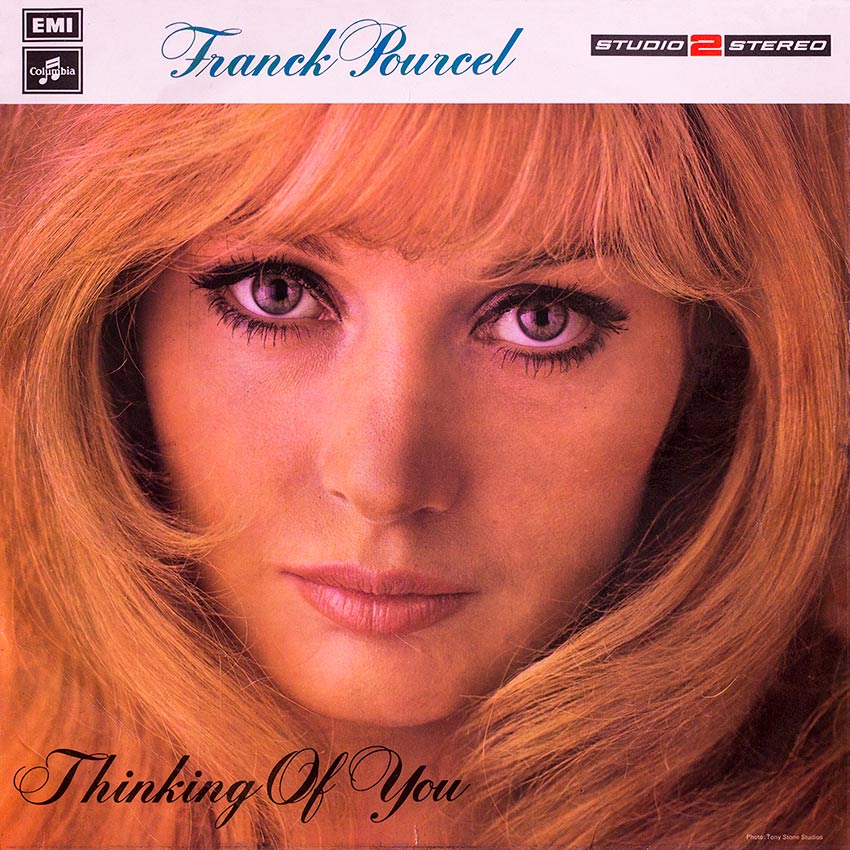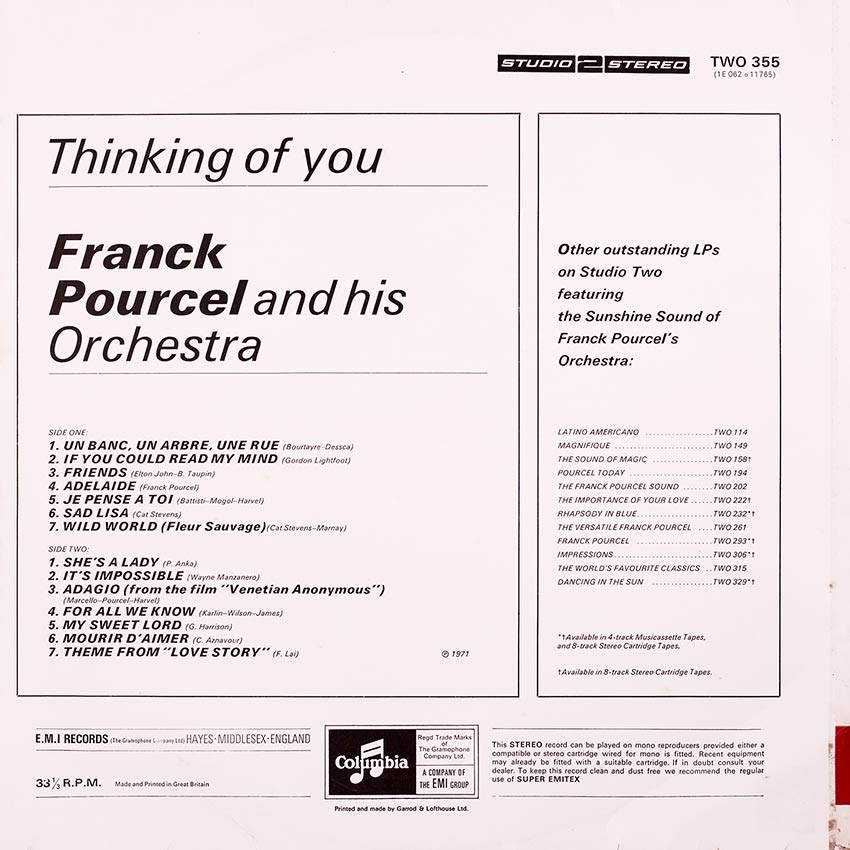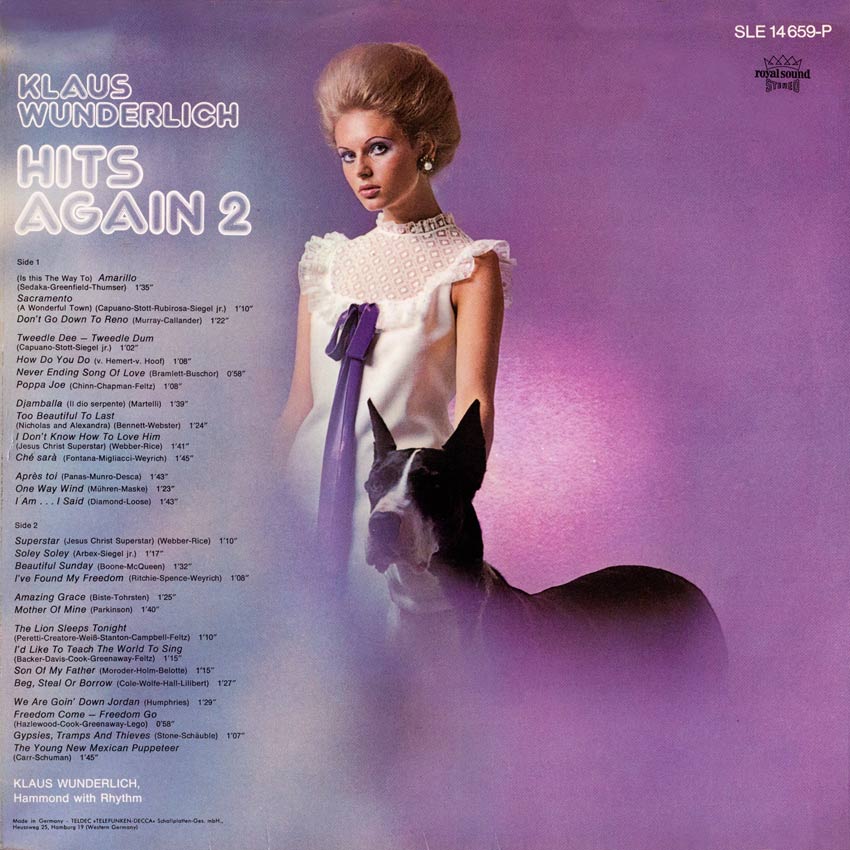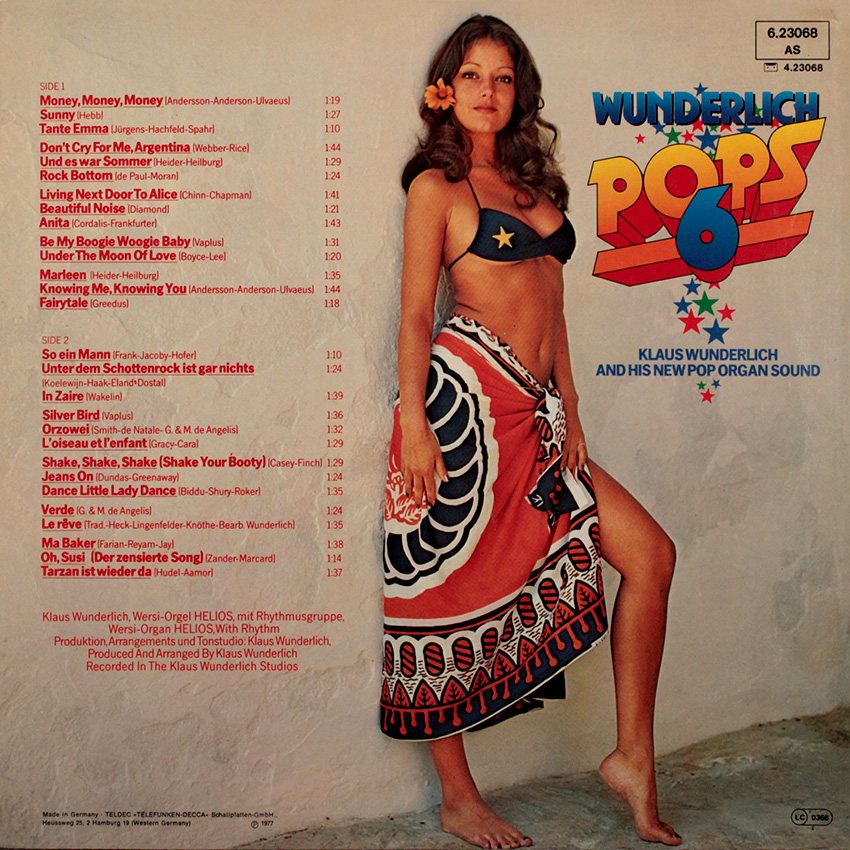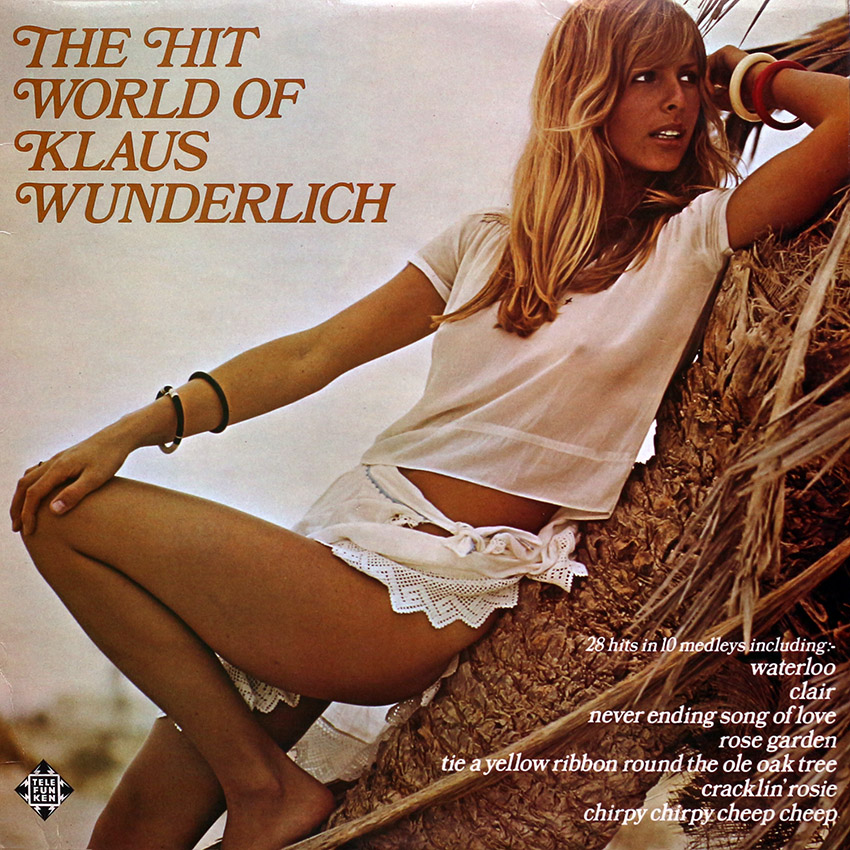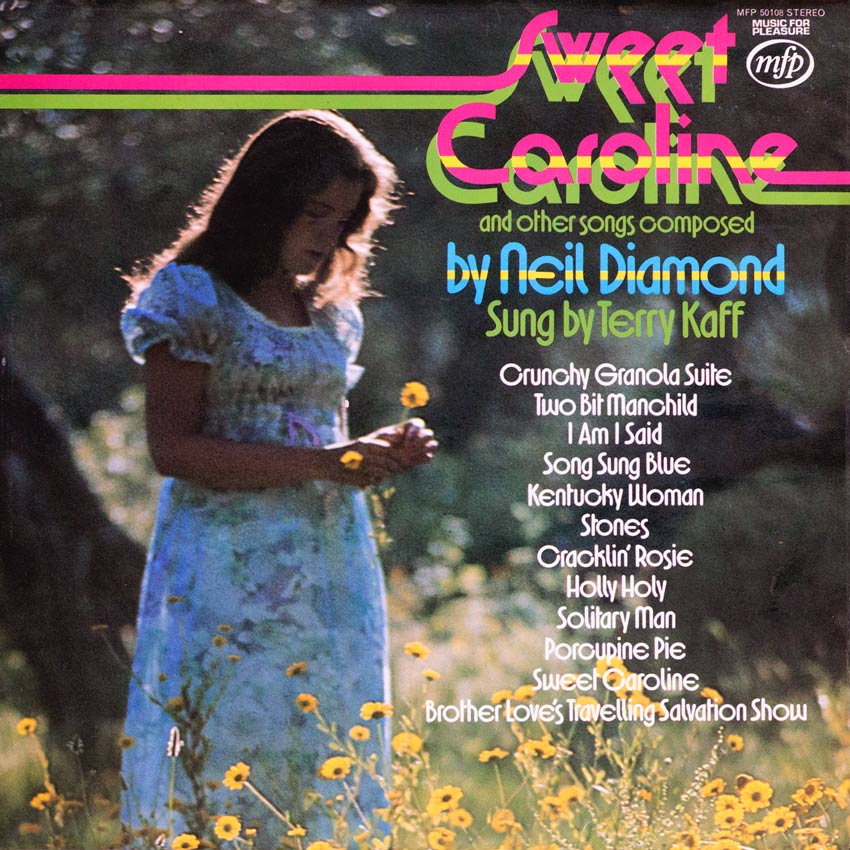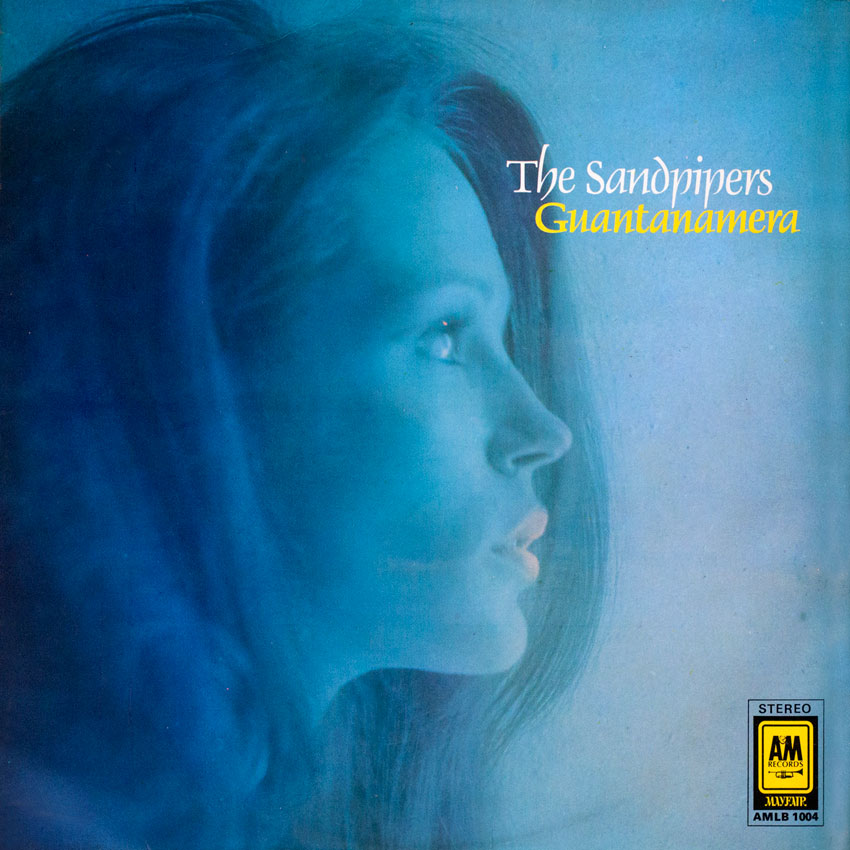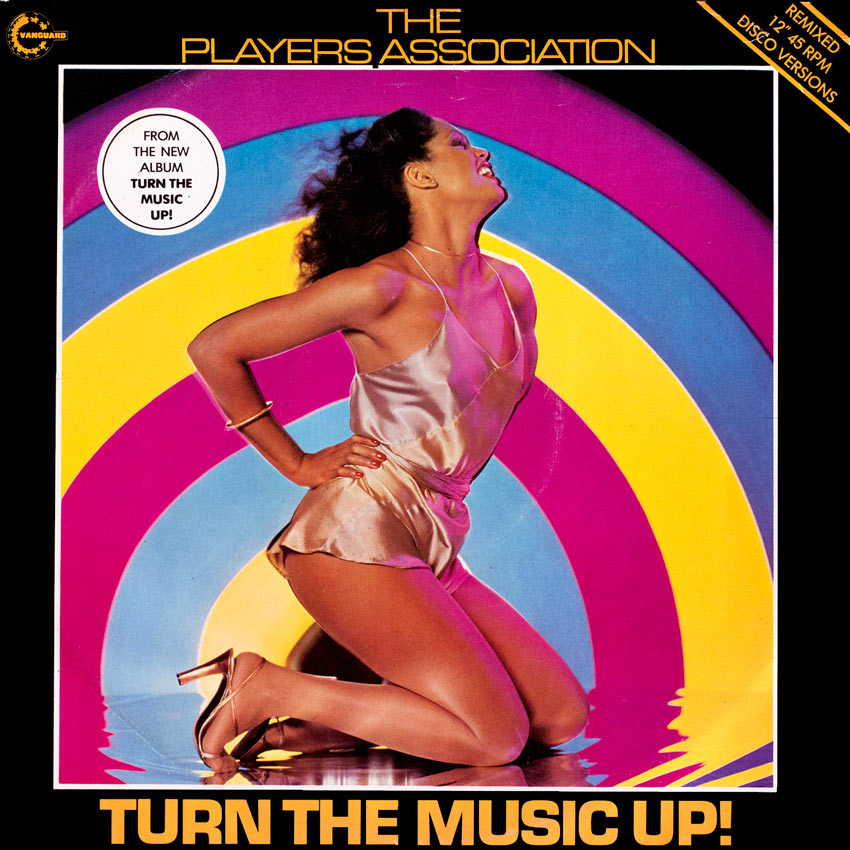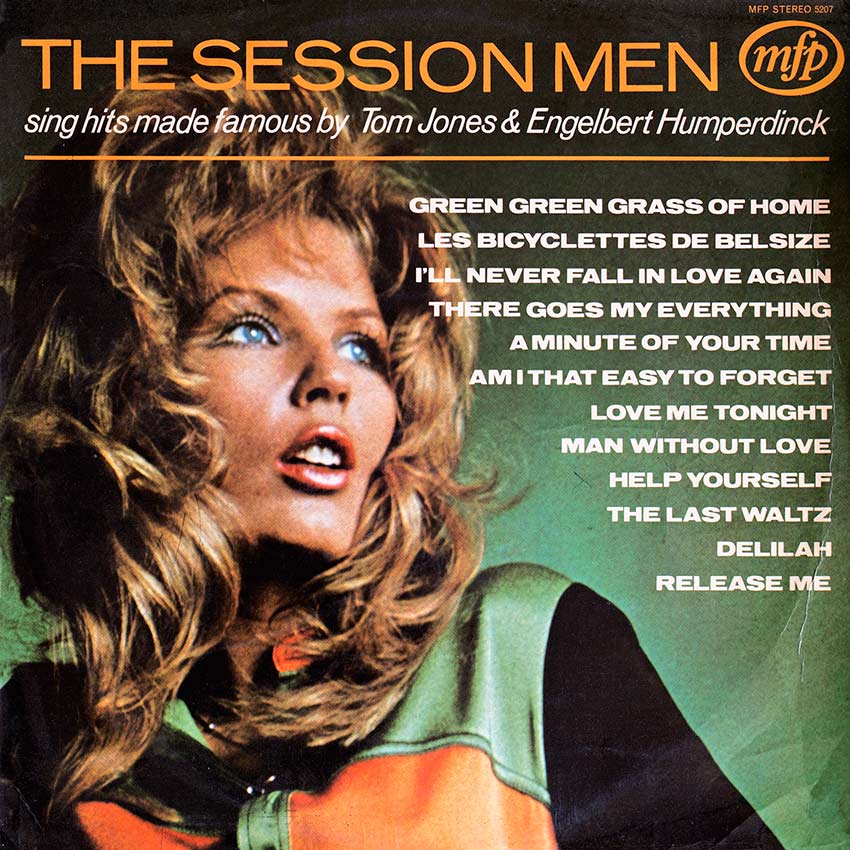Klaus Wunderlich – Hits Again 2
Klaus Wunderlich and his New Pop Organ Sound – Pops 6
Klaus Wunderlich – The Hit World Of
Klaus Wunderlich was a prolific musical artist releasing over a hundred albums in his lifetime. His legendary status is kept alive through a dedicated website.
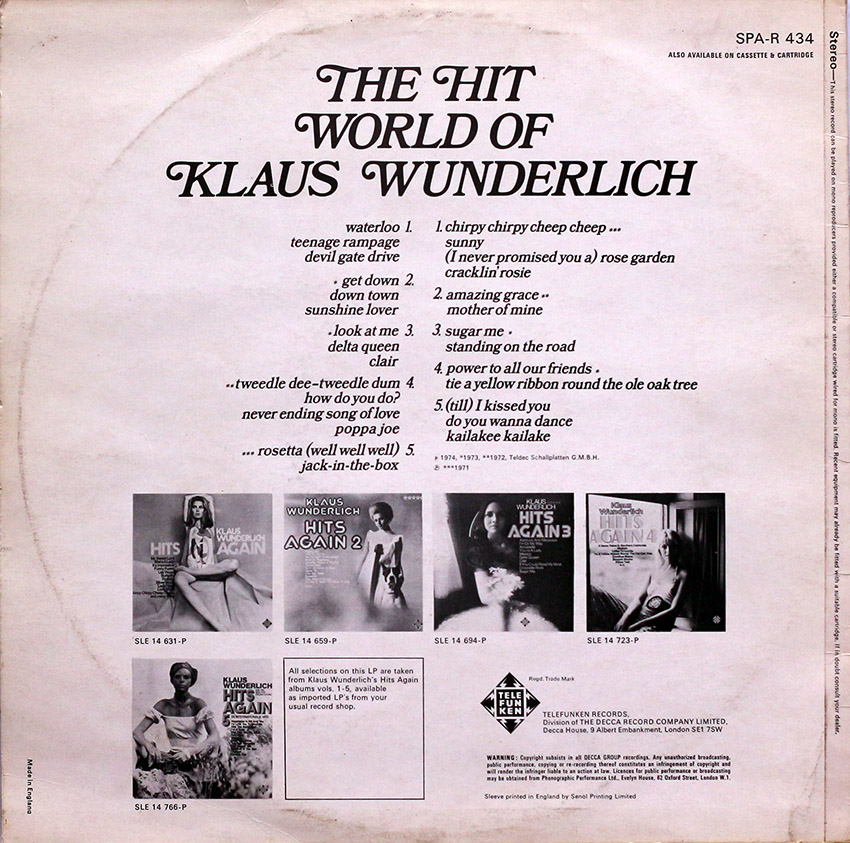
Label: Telefunken SPA-R 434
Terry Kaff – Sweet Caroline and other songs composed by Neil Diamond
Sleeve Notes:
Hand in hand with Neil Diamond’s success as a major recording artist goes his substantial reputation as a songwriter, and the songs interpreted so ably here by Terry Kaff are representative of the very best of the man’s prolific output. Some made the charts as singles, some were tucked away in albums, all are instantly memorable and evocative compositions which underline the fact that Neil Diamond is one of the most perceptive writers on today’s music scene.
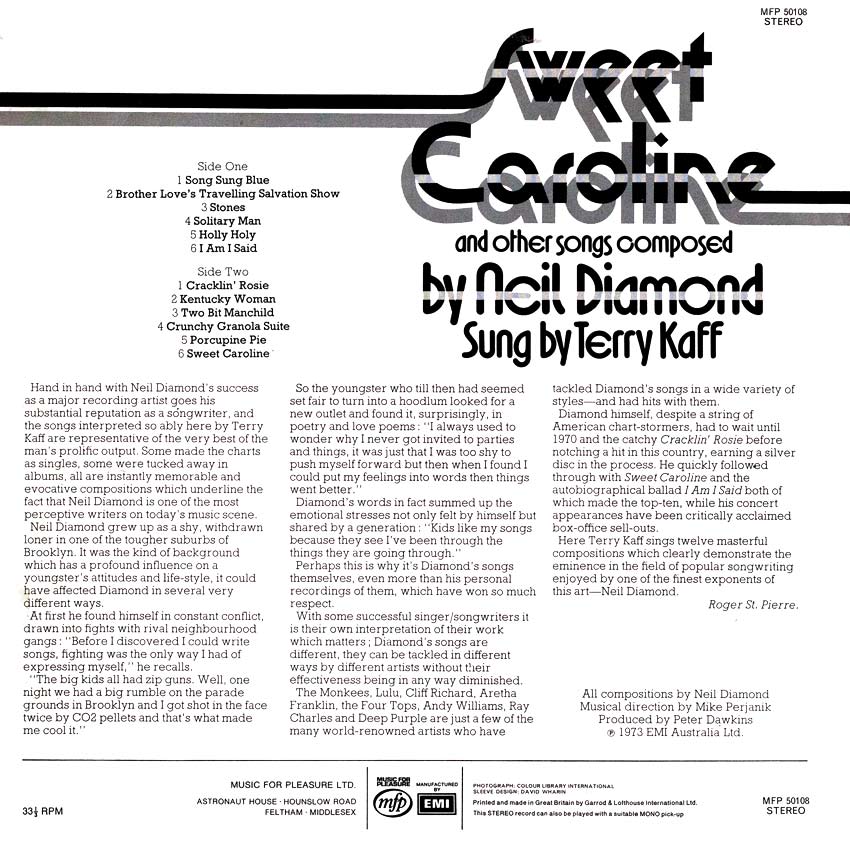
Label: MFP 50108
Photograph: Colour Library International
Sleeve Design: David Wharin
The Sandpipers – Guantanamera
Sleeve Notes:
There’s no doubt about it. The Sandpipers are one of the finest singing groups in the world. The three ex-Mitchell Boys – all aged 26 – who collectively call themselves the Sandpipers, make records which have a lasting appeal to the more discerning kind of record buyer – the type who shells out good money for something he knows will not pall inside a few weeks. It is significant perhaps to note that the solid popularity of the Sandpipers isn’t confined to one age group. Good music lovers of all ages readily snap up their records and, if they are lucky, make haste to take in one or more of their in-person appearances.
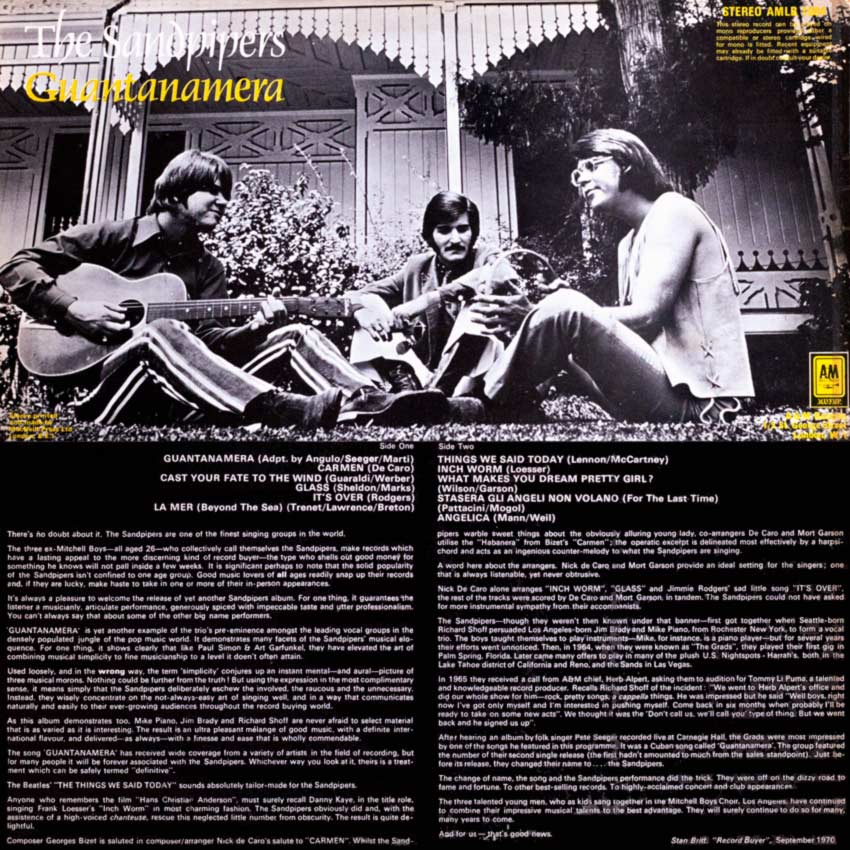
Label: A&M Records AMLB 1004
Ralph Vaughan Williams – Sir Adrian Boult – Fantasia On ‘Greensleeves
Sleeve Notes:
There are probably few more familiar tunes than the English traditional melody “Greensleeves.” From 1580 at least – when it was first mentioned in a registry of ballads printed in London – to the present day, it has been used to bear a hundred or more different texts. (The familiar lines, “Alas, my love, you do me wrong, to cast me off discourteously,” seem to have been first printed in 1584.) Shakespeare knew the song, mentioning the title twice in his “Merry Wives of Windsor.” It was one of these references which prompted Ralph Vaughan Williams to use the tune in his opera “Sir John in Love,” which, in turn, was based on Shakespeare’s “Merry Wives.” (Mrs. Ford. pointing out the discrepancy between Sir John Falstaff’s words and deeds, complains “They do no more adhere and keep place together than the Hundredth Psalm to the tune of Green Sleeves.”)
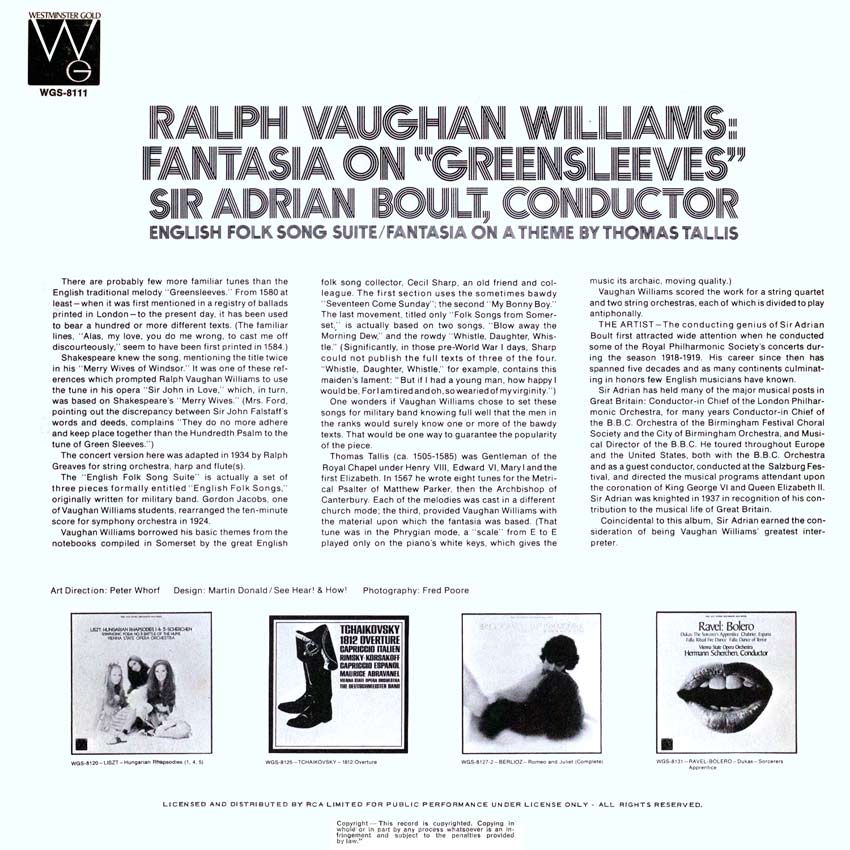
Label: Westminster Gold WGS-8111
Art Direction: Peter Whorf
Design: Martin Donald/See Hear! & How!
Photography: Fred Poore
The Players Association – Turn The Music Up!
Precisely what the cover model of this release is doing is hard to establish. My best guess is that, having spent the previous 30 minutes scrubbing the floor to a mirror-like sheen (look at that reflection!), she has just realised the folly of not adopting the correct posture when kneeling and cleaning. The result is intense pain particularly in the lumbar region. I think there’s a lesson for everyone there. Thank you Vanguard Records, The Players Association and cover photographer Frank Kolleogy.
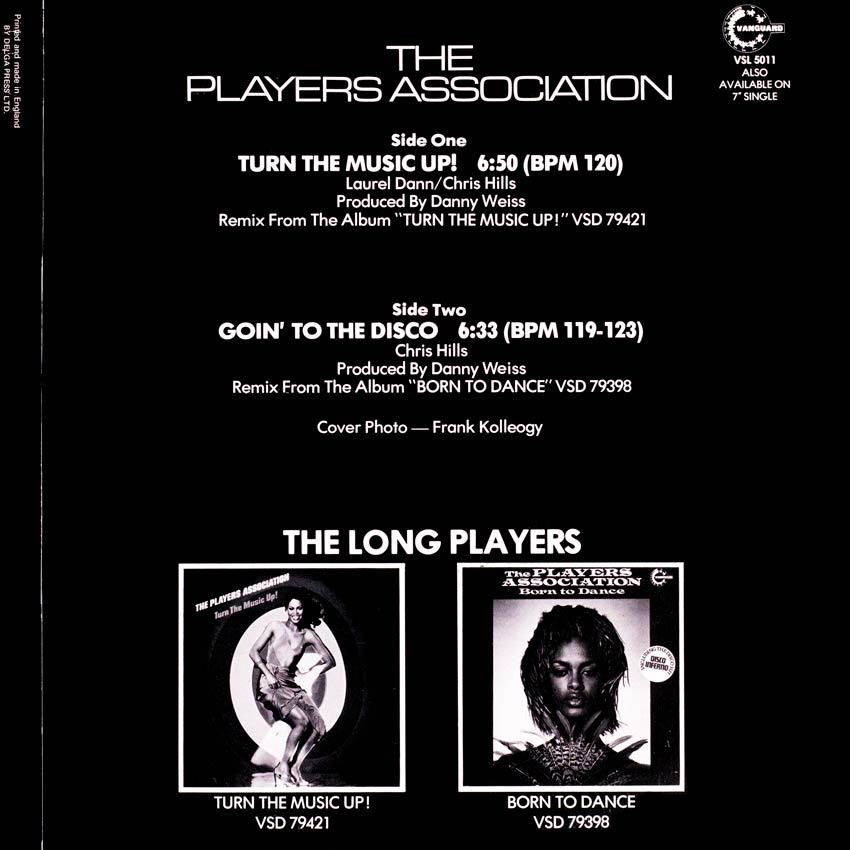
Label: Vanguard – VSL 5011
Smash Hits ’71
The Session Men sing hits by Tom Jones and Engelbert Humperdink
Includes The Session men’s rendition of “Delilah” which is a dark song about a man who murders his girlfriend. Not many realise how dark the song is.
Also includes “Release Me”, (in)famous for preventing The Beatles taking the top spot with “Strawberry Fields Forever/Penny Lane”, a crime for which Engelbert has yet to be charged.

Label: MFP 5207

